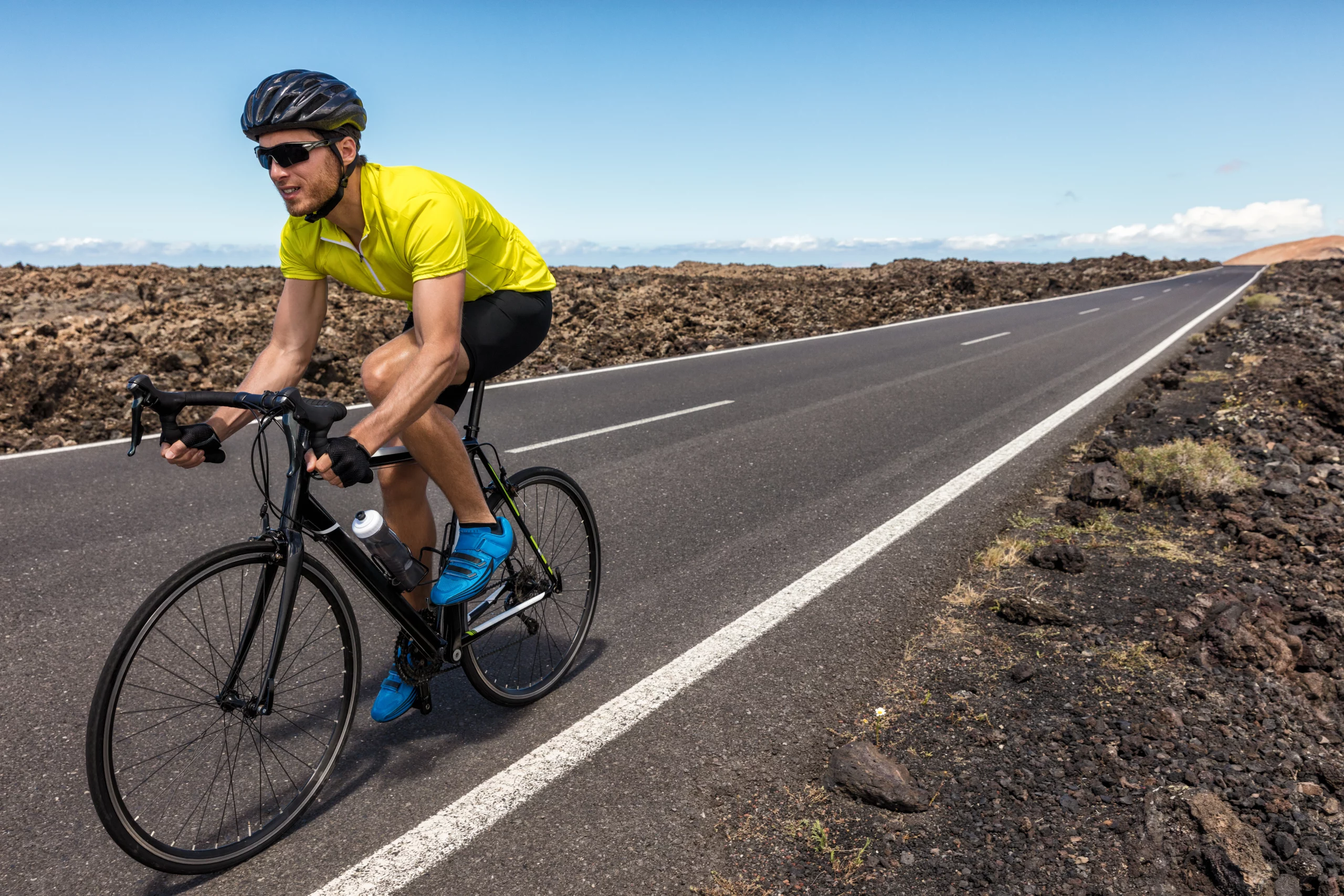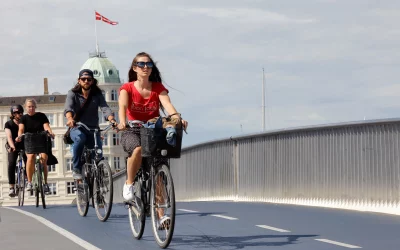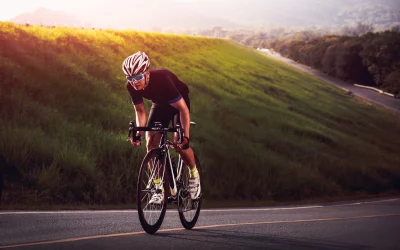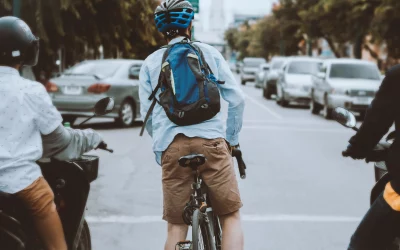Best Colorado Bicycle Accident Attorneys
In Colorado, the bicycle is considered a car, and the biker is regarded as the driver. Bicyclists enjoy the same rights to the highways as drivers of other vehicles and must follow the same traffic regulations.
These regulations require motorists to stop at stop signs and red lights, ride in the direction of traffic, use lights at night, cede the right of way when joining a highway, and yield to pedestrians in crosswalks.
USAGE OF BICYCLE LANES IN COLORADO SPRINGS
If a cyclist is not traveling at the same speed as current motor car traffic, he or she must ride as far to the right as practicable. (On one-way streets, the bicycle may ride far left instead.) A bicycle is expected to utilize a designated bike lane, often located on the far right side of the street.
As of 2011, Colorado’s lane position and bike lane laws offer an exemption for escaping a potentially dangerous situation. This is essential because it enables bikers to predict dynamic situations that make riding in a bike lane or far right lane risky.
A biker may leave the side of the road or the bike lane if the cyclist maintains a safe distance from
- passing automobiles
- If the lane is too small to safely share with passing cars
- To make a left turn
- To avoid debris or other
COLORADO SPRINGS PROVIDES SPACE MOTOR VEHICLES PASSING
Because a bicycle has the same right to the road as a driver, a motorist approaching a bike must wait until it is safe to pass. The driver may need to slow down and wait for sufficient space, or he or she may need to change lanes.
Except for going to the far right of the lane, it is not the cyclist’s responsibility to stop or otherwise move out of the path of the car.
LIABILITY IN COLLISIONS BETWEEN BICYCLES AND MOTOR VEHICLES
When a bicycle collides with a car, determining who is at fault is often instance-specific. Frequently, guilt is determined by who had the right-of-way at the time of the collision. One example is a right turn right-of-way.
BICYCLE ACCIDENTS IN COLORADO SPRINGS: RIGHT TURN RIGHT-OF-WAY
A collision with an car turning right is one of the most prevalent causes of bicycle accidents. When a car makes a right turn, it goes across the path of a bicycle, regardless of whether the rider is in a traffic lane or a bike lane. Several of these collisions occur when a car passes a bike and then slows down to turn right, straight into the path of a bicyclist with nowhere to go.
Alternatively, a car may make a right turn straight into a cyclist without noticing or seeking the bike.
One of the fundamental traffic laws is that a car may not turn until it is safe. Because a bike has the same right to the road as a motor car and because side-of-the-road legislation requires cyclists to ride on the right, a cyclist is permitted to go straight through a junction without yielding to an car turning right. In each of these instances, the driver is legally responsible for the collision.
The common denominator in a large number of bicycle vs. car collisions is this: Each state has what is often referred to as “side-of-the-road” laws that require bicyclists to ride on the far right side of the road or in a bike lane if they are not traveling as quickly as car traffic.
As a result, bikers who are serious about following the law will adhere to these guidelines. At the same time, bicycles’ failure to follow “side-of-the-road” laws often results in three of the most prevalent forms of bicyclist-related traffic accidents:
- colliding with an open door of a parked car;
- getting brushed by a passing car or truck, and
- being struck by a right-turning motor
Fortunately, additional regulations work in conjunction with “side-of-the-road” provisions to safeguard cyclists who share roadways with motor vehicles.
By and large, a bicycle has the same right to the road as a motor car. Unless specifically specified by legislation (some of which are described below), a bicycle may ride in the center of a traffic lane. It must be accorded the same rights of way as motor vehicles.
If you are a biker, you may need to remind an insurance adjuster of this many times throughout your claim talks.
In this post, we’ll examine many laws and traffic regulations that, when combined, often play a significant role in determining blame for an accident between a bicycle and a motor car.
BIKE LANES AND ‘SIDE-OF-ROAD’ LAWS
If a cyclist is not traveling at the same speed as current motor car traffic, he or she must ride as far to the right as practicable. (On one-way streets, the cyclist may ride to the far left instead.) If a dedicated bike lane is provided, often on the far right side of the route, the cyclist is expected to utilize it.
A biker may leave the side of the road or the bike lane in the following circumstances:
- provided the rider maintains a safe distance from moving traffic
- when the lane is too narrow to safely share with passing vehicles;
- while making a left turn; or
- when avoiding debris or other road hazards.
Because a cyclist is required by law to ride near parked cars, and because negligence principles dictate that a person should not open a car door unless it is reasonably safe to do so, an accident caused by the opening of a parked car door is almost always entirely the fault of the door-opener.
A possible exemption would be if there was no motor car traffic, preventing the cyclist’s requirement to keep to the right. In this case, the driver who opened the car door may allege that the cyclist had a chance to avoid the door and thereby contributed to the accident.
PASSING MOTOR VEHICLES CONTRIBUTE TO AVAILABLE SPACE
Because side-of-the-road laws compel bicycles to share lanes with passing traffic, a companion rule requires motor vehicles to maintain a safe passing gap. Three feet is sometimes described as a safe distance, yet being that accurate while recreating an accident is quite difficult. Sufficient passing room is especially critical for trucks, buses, and big SUVs.
Because a bicycle has the same right to the road as a driver, a motorist approaching a bike must wait until it is safe to pass. The driver may need to slow down and wait for sufficient space, or he or she may need to change lanes. Except for going to the far right of the lane, it is not the cyclist’s responsibility to stop or otherwise move out of the path of the car.
If you are a bike involved in an accident with an car passing in the same lane, an insurance adjuster may argue that you were not as far to the right as you should have been. You can retort that the motorist’s responsibility was to wait until it was safe to pass — knocking you down was not an acceptable driving choice.
If the motor car was broader than an ordinary car, you might also wish to measure the width of the traffic lane, up to the line of parked cars (if any), and the width of the car that impacted you.
At the handlebars, determine the width of your bicycle (or wider, if you were bumped on the part of your body that extends out farther than the bars). If the motor car’s increased width made safely passing you at that moment more difficult, you have an even stronger case that the car had no right to try the pass at that time.
RIGHT TAKE THE RIGHT-OF-WAY
A collision with an car turning right is one of the most prevalent causes of bicycle accidents. When a car makes a right turn, it goes across the path of a bicycle, regardless of whether the rider is in a traffic lane or a bike lane. Several of these collisions occur when a car passes a bike and then slows down to turn right, straight into the path of a bicyclist with nowhere to go.
Alternatively, a car may make a right turn straight into a cyclist without seeing (and often without looking for) the bike.
In each of these instances, the driver is legally responsible for the collision. One of the fundamental traffic laws is that a car may not turn until it is safe.
Contact a Bicycle Attorney in Colorado Springs
Representing bicycle accident victims involves a team of proactive detectives and attorneys committed to their client’s best interests.
At Warrior Bicycle Accident Lawyers, our injury lawyers thoroughly examine each claim to defend our clients aggressively and passionately and secure the best possible outcomes.







